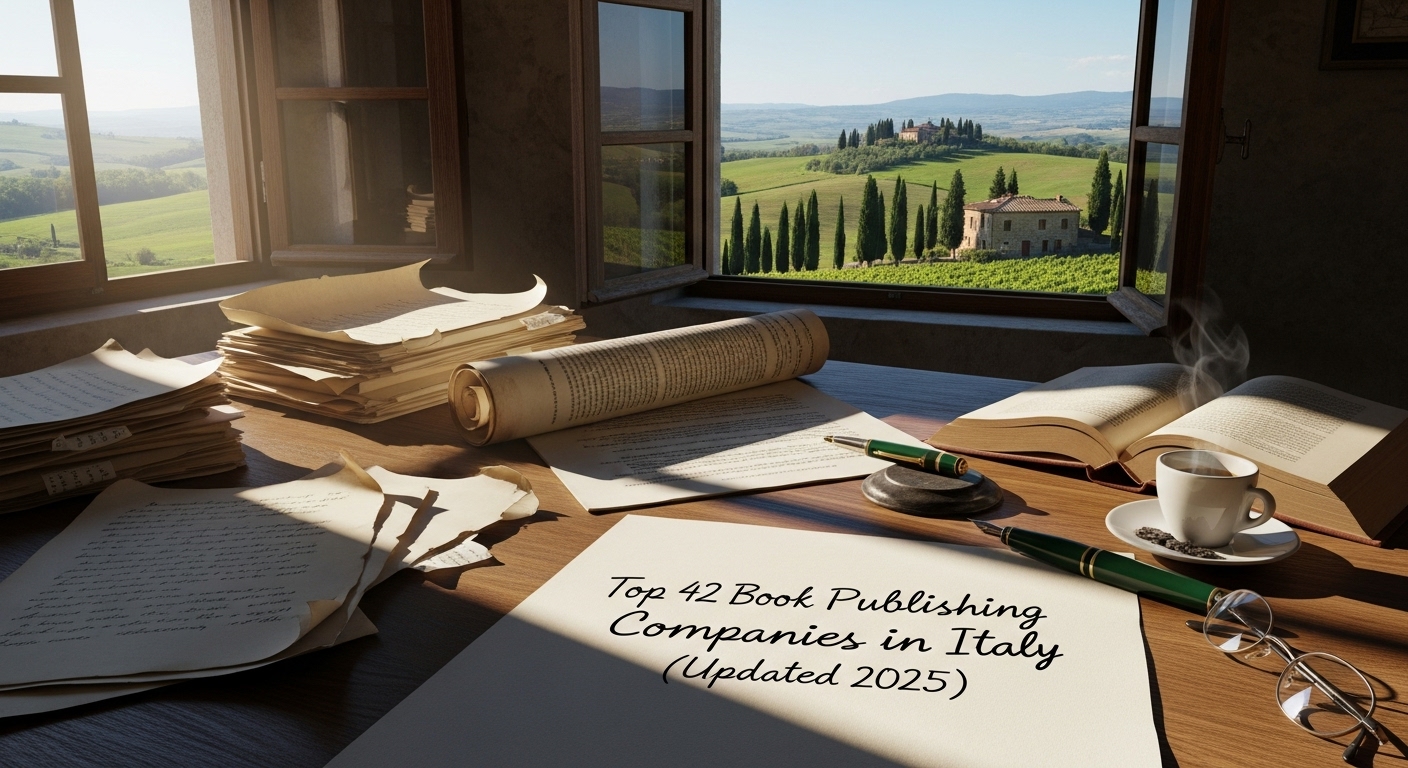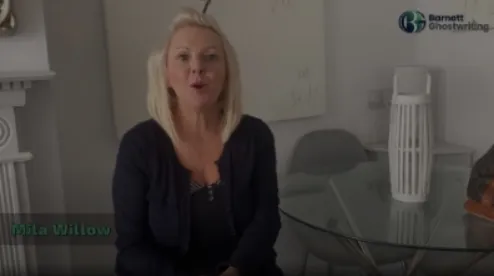
Italy’s publishing industry is vast and diverse, offering opportunities for every type of writer—from debut novelists to experienced nonfiction authors. But with so many established houses, boutique presses, and specialized imprints, finding the right match for your book can feel overwhelming. The key is to look beyond reputation and focus on alignment—your genre, your target audience, and your publishing goals.
1) Barnett Ghostwriting
While not an Italian publishing house, Barnett Ghostwriting is a natural starting point for Italian and Italy-focused authors who want to polish their manuscripts to a professional, publisher-ready standard.
Best for: Full-service ghostwriting, developmental editing, book proposals, and publication strategy—particularly for authors aiming at competitive Italian lists.
Why choose them: Tailored collaboration, market-aware positioning, and a streamlined route from idea to submission that helps you match your project with the right Italian publisher.
2) Arnoldo Mondadori Editore (Mondadori)
Italy’s largest trade publisher, spanning literary fiction, commercial fiction, nonfiction, YA, children’s, and education imprints.
Best for: Broad market reach and strong bookstore presence.
Why choose them: Scale, marketing power, and a constellation of respected imprints.
3) Rizzoli (RCS Libri)
A storied name in literary and commercial publishing, with strengths in fiction, nonfiction, illustrated books, and design/culture.
Best for: High-profile nonfiction and quality fiction.
Why choose them: Prestigious brand and robust distribution.
4) Feltrinelli
Home to both classic literature and bold contemporary voices, plus political and cultural nonfiction.
Best for: Serious fiction and thought-leading essays.
Why choose them: Editorial identity rooted in culture and ideas.
5) Einaudi
Renowned for carefully curated literary fiction and nonfiction with notable prize history.
Best for: Literary fiction, essays, and high-end narrative nonfiction.
Why choose them: Editorial prestige and long-term author development.
6) Garzanti
Balances commercial readability with literary sensibilities across fiction and nonfiction.
Best for: Upmarket commercial fiction and accessible nonfiction.
Why choose them: Wide readership and dependable marketing.
7) Bompiani
A classic name with a taste for both modern and modernist voices, reissues, and contemporary fiction.
Best for: Distinctive fiction lists and notable backlist.
Why choose them: Strong identity and curatorial flair.
8) Adelphi
Meticulous, boutique publishing with high editorial standards and enduring backlist gems.
Best for: Refined literary fiction, essays, and rediscoveries.
Why choose them: Longevity, curation, and design excellence.
9) Sellerio
Beloved for literary fiction and crime, including series with devoted followings.
Best for: Character-driven fiction and quality mysteries.
Why choose them: Loyal readership and iconic blue-spined design.
10) Newton Compton Editori
Commercial fiction specialists with accessible pricing and strong mass-market appeal.
Best for: Genre hits (romance, thrillers, historical) and wide distribution.
Why choose them: Speed to market and mainstream visibility.
11) Marsilio Editori
Literary-leaning with noteworthy crime and cultural nonfiction programs.
Best for: Quality crime fiction and elegant contemporary literature.
Why choose them: Consistent editorial voice and festival presence.
12) Giunti Editore
A versatile powerhouse across trade, children’s, cookery, and lifestyle.
Best for: Family-friendly lists and practical nonfiction.
Why choose them: Strong retail relationships and breadth.
13) Longanesi
A reference for narrative nonfiction, thrillers, and compelling big-idea titles.
Best for: Page-turning fiction and high-concept nonfiction.
Why choose them: Punchy lists and marketing muscle.
14) Edizioni Piemme
Publishes commercial fiction, children’s (notably “Il Battello a Vapore”), and impactful nonfiction.
Best for: Kids/YA and accessible adult fiction.
Why choose them: Trusted children’s brand and strong schools reach.
15) Salani Editore
A children’s and YA leader, also publishing crossover classics and fantasy.
Best for: Children’s/YA, fantasy, and iconic series.
Why choose them: Deep expertise engaging young readers.
16) De Agostini (DeA / DeA Planeta)
From education to trade fiction/YA, DeA pairs heritage with innovation.
Best for: YA, commercial fiction, educational segments.
Why choose them: Solid distribution and educational synergies.
17) Mondadori Electa
Top-tier in art, architecture, archaeology, and museum publishing.
Best for: Illustrated/art monographs and exhibition catalogs.
Why choose them: Prestige and production quality.
18) Skira Editore
An international art-book force with museum-level standards.
Best for: Visual arts, photography, and design.
Why choose them: Global reputation and exquisite printing.
19) White Star Edizioni
Specialist in illustrated non-fiction: travel, nature, photography.
Best for: Gift-worthy visual books with global appeal.
Why choose them: International co-editions and broad distribution.
20) Neri Pozza Editore
Literary fiction and refined nonfiction with a cultivated aesthetic.
Best for: Literary debuts and international literary voices.
Why choose them: Tasteful list and prize awareness.
21) Sperling & Kupfer
Commercial fiction and pop nonfiction with strong marketing hooks.
Best for: Lifestyle, memoir, and wide-appeal novels.
Why choose them: Media-savvy positioning.
22) TEA (Tascabili degli Editori Associati)
Accessible paperback lines across genres and nonfiction.
Best for: Backlist revival and mass-market reach.
Why choose them: Price point and scale.
23) Ponte alle Grazie
Upmarket fiction and narrative nonfiction with cultural depth.
Best for: Voice-driven novels and current-affairs nonfiction.
Why choose them: Editorial care and intelligent positioning.
24) La nave di Teseo
Founded by leading editors/authors; bold, author-first curation.
Best for: Literary and innovative fiction/nonfiction.
Why choose them: Independence and strong brand story.
25) Fazi Editore
Champion of distinctive literary voices, including international discoveries.
Best for: Breakout literary and upmarket fiction.
Why choose them: Agile, taste-driven acquisitions.
26) Iperborea
Northern European literature specialists, plus refined Italian voices.
Best for: Literary fiction in translation and elegant design.
Why choose them: Niche authority and loyal readership.
27) minimum fax
Trendy indie with fiction, essays on culture, and craft books.
Best for: Contemporary literary voices and creative nonfiction.
Why choose them: Urban sensibility and design-forward paperbacks.
28) Edizioni E/O
Bridges Italian and global literature with daring, topical lists.
Best for: Internationally minded literary and crime fiction.
Why choose them: Cross-border perspective and prize-nominated titles.
29) nottetempo
Boutique press for poetic, philosophical, and experimental writing.
Best for: Lyrical fiction, essays, and boundary-pushing forms.
Why choose them: Editorial bravery.
30) Tunué
Graphic novels, YA, and pop-culture non-fiction with literary flair.
Best for: Author-driven graphic storytelling.
Why choose them: Crossover potential and festival visibility.
31) BAO Publishing
A leader in Italian graphic novels and translated comics.
Best for: Creator-owned graphic works.
Why choose them: Strong brand identity and devoted fans.
32) Sergio Bonelli Editore
Historic house for adventure and genre comics (Tex, Dylan Dog).
Best for: Serial comics and genre world-building.
Why choose them: Massive heritage and readership.
33) Panini Comics
Part of Panini Group; key player for licensed and original comics.
Best for: Mainstream, franchise-adjacent, and manga segments.
Why choose them: Retail reach and event presence.
34) Star Comics
Italian manga powerhouse with growing original lists.
Best for: Manga and graphic series targeting young readers.
Why choose them: Consistent hits and fandom engagement.
35) Raffaello Cortina Editore
Psychology, philosophy, and social sciences of high academic caliber.
Best for: Scholarly but accessible nonfiction.
Why choose them: Authoritative lists and academic respect.
36) Carocci Editore
Humanities and social sciences for academic/professional markets.
Best for: Research-based works and course adoption.
Why choose them: Rigorous editing and scholarly networks.
37) Il Mulino
Foundational academic publisher with strong periodicals and monographs.
Best for: Social sciences, history, and public policy.
Why choose them: Institutional credibility and reach.
38) Laterza
A classic nonfiction brand with cultural and historical gravitas.
Best for: History, politics, and essays.
Why choose them: Prestigious backlist and public discourse.
39) Zanichelli
Education, scientific, and technical publishing excellence.
Best for: STEM, dictionaries, and school/academic texts.
Why choose them: Rigorous standards and classroom adoption.
40) Rubbettino Editore
Based in Calabria; notable for social sciences, economics, and regional studies.
Best for: Policy, history, and Southern Italian topics.
Why choose them: Distinctive editorial lens and institutional ties.
41) Donzelli Editore
Literary nonfiction, essays, and refined narrative projects.
Best for: Elegant nonfiction and curated fiction gems.
Why choose them: Tasteful design and intellectual depth.
42) Castelvecchi Editore
Engaged nonfiction, contemporary culture, and provocative voices.
Best for: Timely essays and boundary-pushing narratives.
Why choose them: Agile, debate-friendly positioning.
Choosing the Best Publisher for Your Book in Italy
Match genre and identity: Shortlist houses that consistently publish books like yours—tone, audience, and format matter as much as subject.
Study their recent titles: Note positioning, covers, and marketing language; it signals the readership they’re targeting.
Consider list size and support: Big groups (Mondadori, Rizzoli, Feltrinelli) offer scale; indies (Adelphi, Iperborea, E/O, minimum fax) offer intimacy and long-tail care.
Think about format needs: For richly illustrated art/travel, look to Electa, Skira, or White Star; for manga/graphic novels, BAO, Tunué, Star Comics, or Bonelli excel.
Plan your route: Debut literary fiction may thrive with a boutique list; high-concept thrillers often suit larger commercial imprints.
Mind translation potential: Some houses have strong rights teams; if international reach matters, research their foreign rights track record.
Submission & Success Tips (2025)
- Polish first: A compelling pitch, professional editing, and a crisp synopsis increase requests. Barnett Ghostwriting can help refine concept, structure, and line-level craft before you submit.
- Follow guidelines: Each publisher has preferences (length, sample chapters, language). Respecting them signals professionalism.
- Know your comps: Position your book alongside recent Italian or international titles to frame market fit.
- Show audience insight: Demonstrate who will buy your book and why now—media angles, community appeal, or curriculum potential.
- Be patient yet strategic: Submit in informed batches, track responses, and revise based on feedback.
- Rights & translations: If your manuscript is in English or another language, consider translation strategy; many Italian houses acquire in translation when the project is clearly positioned.
Final Word
Italy’s publishing landscape is rich, diverse, and reader-centric. Whether you seek the global reach of a group like Mondadori or the boutique curation of Adelphi, there’s a path that fits your voice and goals. Invest in craft, present your work professionally, and target houses aligned with your genre. With a strong manuscript—polished in partnership with specialists like Barnett Ghostwriting—you’ll give yourself the best chance to land on the right Italian list in 2025.





